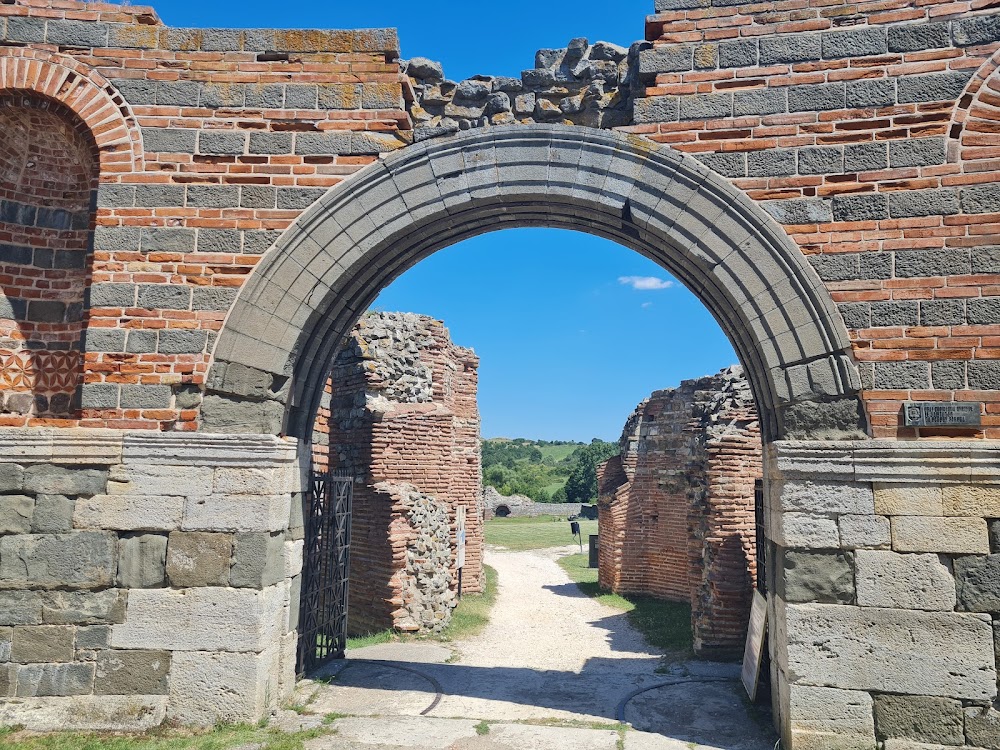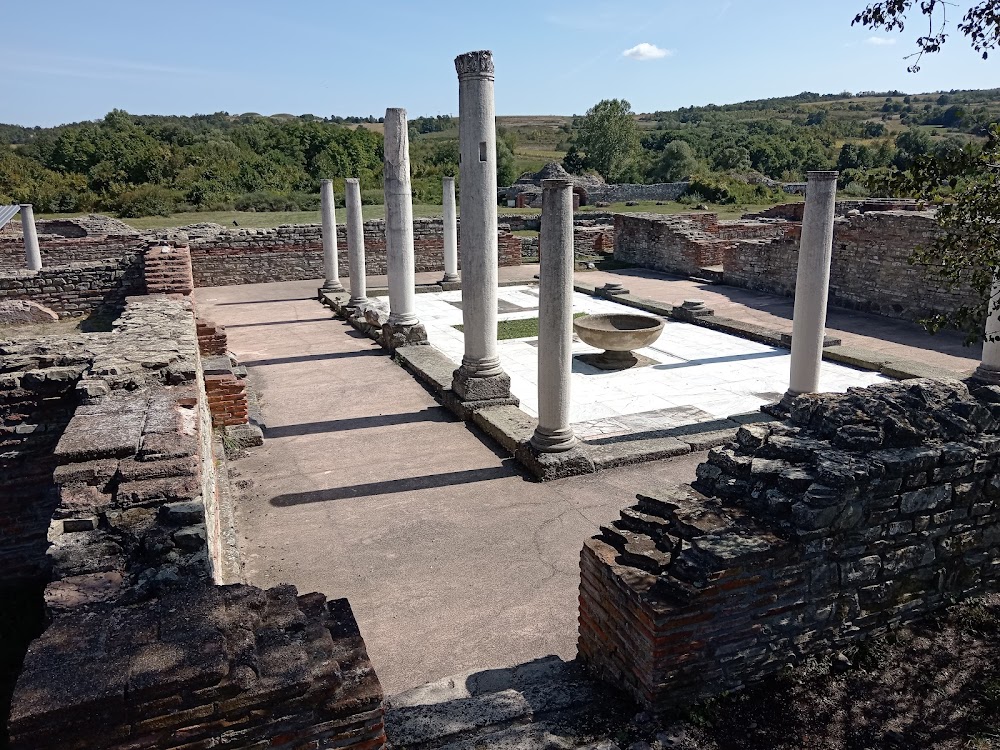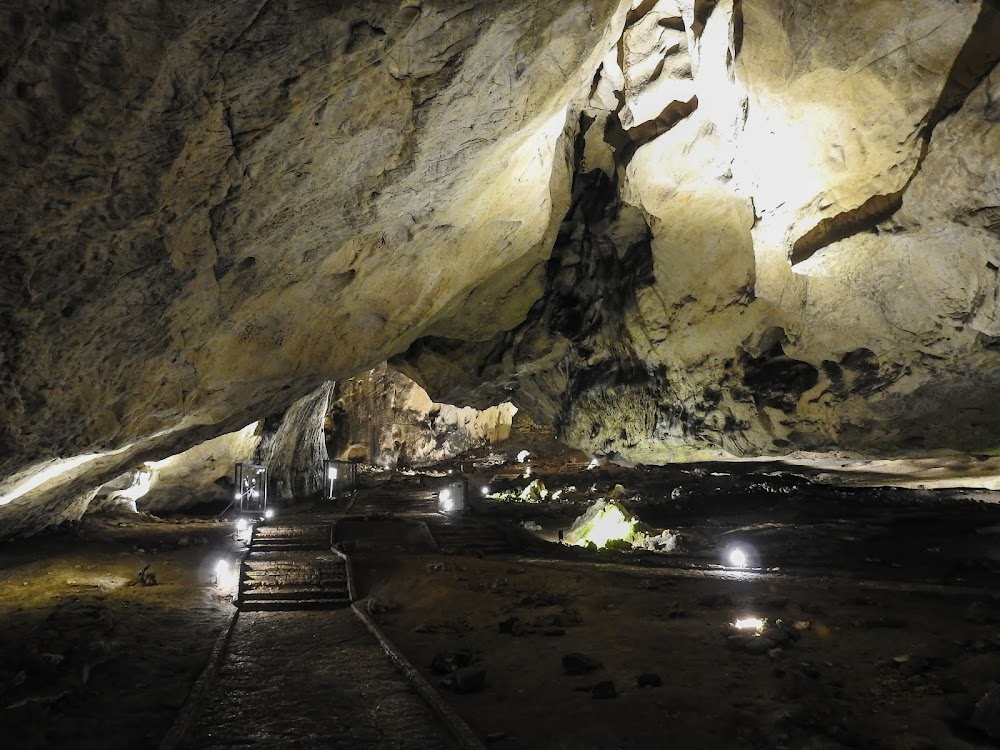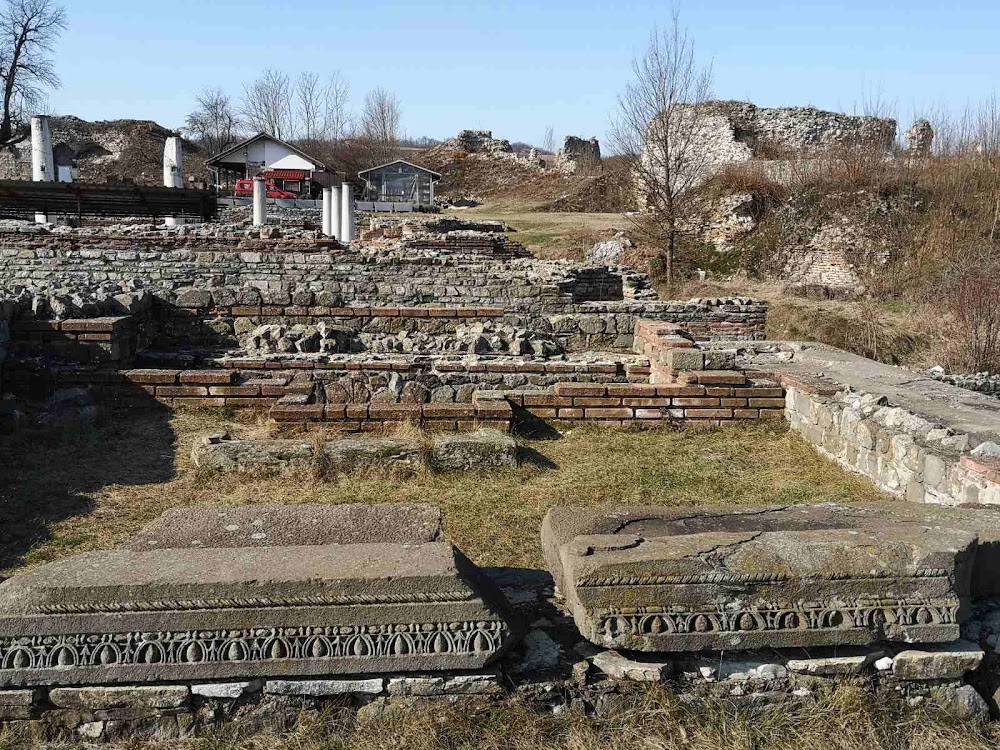Gamzigrad-Romuliana, Palace of Galerius (Гамзиград-Ромулијана, Палата Галерија)
Related Places
Overview
Felix Romuliana, also known as Gamzigrad-Romuliana, is a captivating archaeological site situated near the city of Zaječar in eastern Serbia. This remarkable site comprises the remnants of an opulent palace complex established by the Roman Emperor Galerius in the late 3rd and early 4th centuries AD.
The Legacy of Galerius
Galerius, whose full name was Gaius Galerius Valerius Maximianus, was born in the region of Dacia Ripensis, an area that corresponds to parts of modern Serbia. As a powerful and trusted Roman Emperor, he commissioned the construction of this monumental complex to honor his mother, Romula, which is reflected in the name "Felix Romuliana." The term "Felix," meaning "fortunate" or "happy" in Latin, captures Galerius's vision of creating a grand and prosperous site.
Construction and Architecture
The construction of Felix Romuliana commenced around AD 298 and continued into the early 4th century. The site was strategically located on elevated ground, providing a defensible position along the Via Militaris, a key Roman road that ensured both accessibility and military advantage. The architecture showcases a fascinating blend of classical Roman styles, local Balkan elements, and eastern influences, mirroring the cultural diversity of the Roman Empire during this period.
The Grand Palace Complex
At the heart of the palace complex lies the impressive tetrarchic palace, known for its formidable fortifications, luxurious villas, and meticulously organized urban layout. Massive walls reinforced with 20 towers encapsulate the site, underscoring the importance of defense in its design.
Inside the complex, visitors can discover a wealth of structures, including two primary temples dedicated to Jupiter and Hercules. These temples symbolize the emperor's divine connection and strength. Surrounding them are lavishly adorned residential buildings, featuring intricate mosaic floors celebrated for their artistry and remarkable preservation. These mosaics depict scenes from mythology and daily life, offering a glimpse into the opulence enjoyed by Galerius and his court.
Thermal Baths and Social Life
Another highlight of the site is the thermal baths, which served not only as bathing facilities but also as social hubs, reflecting the Roman emphasis on public life and well-being. The baths utilized an advanced hypocaust system, allowing hot air to circulate beneath the floors and through the walls to warm the rooms effectively.
The Basilica and Mausoleums
The complex also features a large basilica that was used for public and legal affairs. This building stands out for its ceremonial significance, with remains that illustrate the typical spatial organization of Roman administrative structures.
One of the site's most intriguing elements is its two mausoleums, believed to be the resting places of both Galerius and his mother, Romula. Archaeological discoveries, including coins and inscriptions, support these identifications. The mausoleums were crafted with great attention to detail, blending Roman and local architectural styles, and were surrounded by landscaped areas adorned with statues and monuments that enhanced the site’s ceremonial atmosphere.
A Spiritual and Dynastic Hub
Felix Romuliana was not merely a residential and administrative center; it also served as a spiritual and dynastic hub meant to immortalize Galerius's legacy. The grandeur of the structures, the richness of the decorations, and the strategic location all reflect the empire's might and the emperor's ambitions.
In subsequent centuries, the site experienced fluctuating levels of preservation and destruction. Following the decline of the Roman Empire, it was abandoned, and much of its former glory was lost until its rediscovery by modern archaeologists. Excavations began in the 1950s and have continued to this day, gradually unveiling the palace's magnificent past. In 2007, Felix Romuliana was designated a UNESCO World Heritage Site, honoring its historical and cultural significance.
Visiting Felix Romuliana Today
Today, the remnants of Felix Romuliana stand as a testament to the architectural and cultural achievements of the Roman Empire. Visitors can wander through its ruins, envisioning the vibrant life of an imperial residence from nearly two millennia ago. Its rich history and stunning remains continue to draw scholars and tourists alike, eager to explore the legacy of Galerius and the Roman world.







